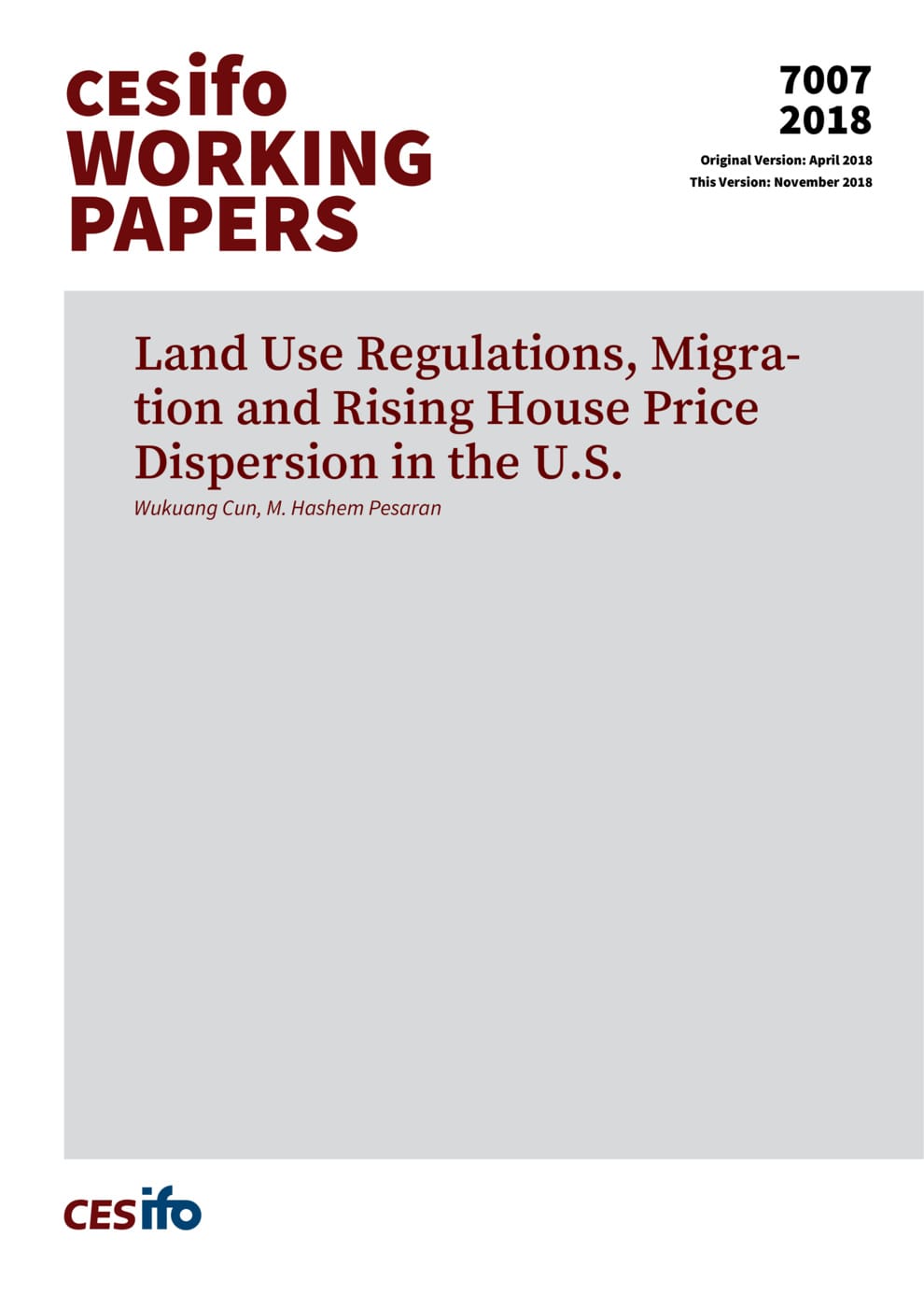Land Use Regulations, Migration and Rising House Price Dispersion in the U.S.
CESifo, Munich, 2018
CESifo Working Paper No. 7007

This paper develops and solves a dynamic spatial equilibrium model of regional housing markets in which house prices are jointly determined with location-to-location migration flows. Agents optimize period-by-period and decide whether to remain where they are or migrate to a new location at the start of each period. The agent’s optimal location choice and the resultant migration process is shown to be Markovian with the transition probabilities across all location pairs given as non-linear functions of wage and housing cost differentials, which are time varying and endogenously determined. On the supply side, in each location the construction firms build new houses by combining land and residential structures; with housing supplies endogenously responding to migration flows. The model can be viewed as an example of a dynamic network where regional housing markets interact with each other via migration flows that function as a source of spatial spill-overs. It is shown that the deterministic version of the model has a unique equilibrium and a unique balanced growth path. We estimate the state-level supplies of new residential land from the model using housing market and urban land acreage data. These estimates are shown to be significantly negatively correlated with the Wharton Residential Land Use Regulatory Index. The model can simultaneously account for the rise in house price dispersion and the interstate migration in the U.S.. Counterfactual simulations suggest that reducing either land supply differentials or migration costs could significantly lower house price dispersion.
Fiscal Policy, Macroeconomics and Growth
Empirical and Theoretical Methods